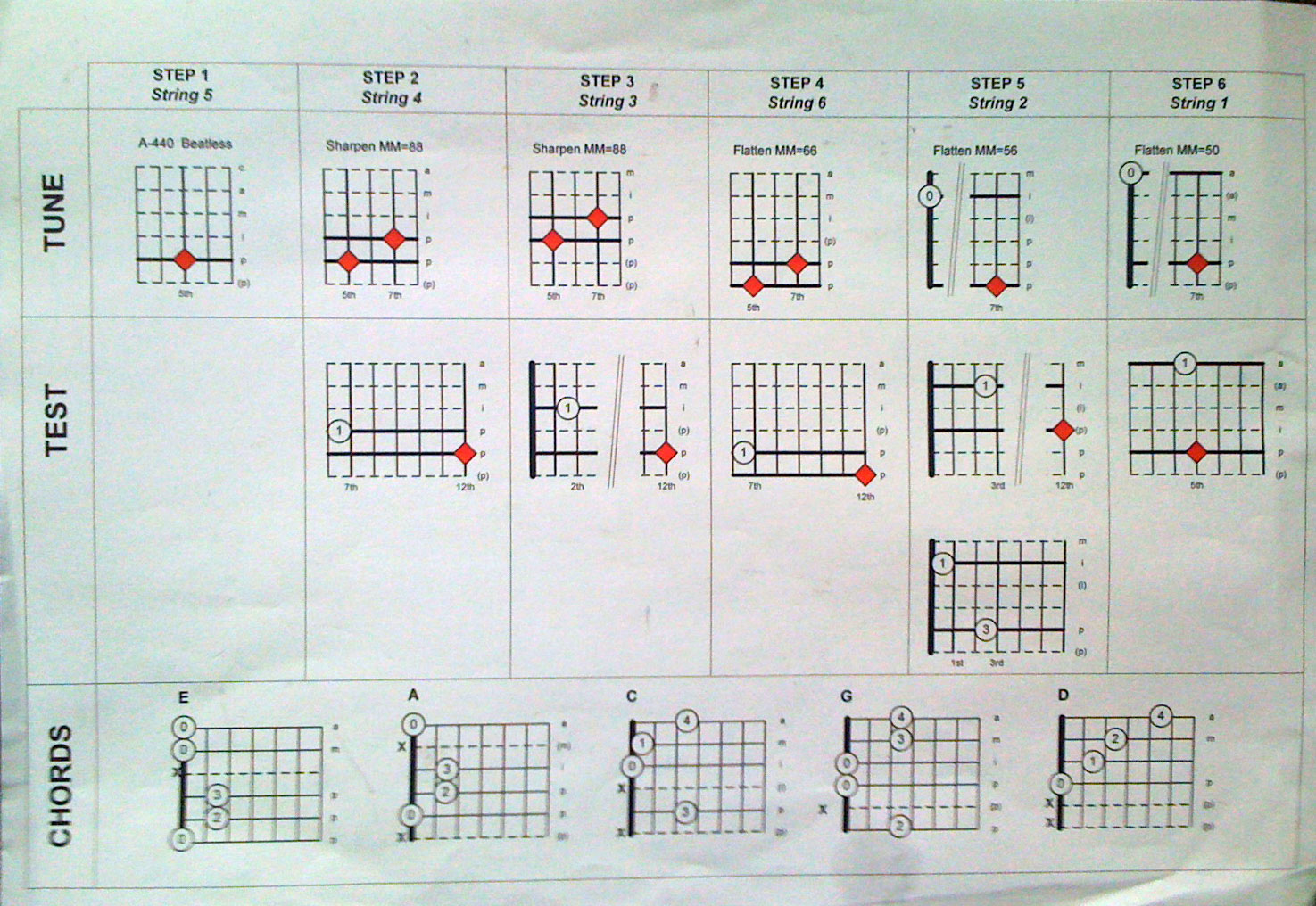|
mark indigo -> RE: fine tuning E chord (Aug. 27 2010 11:22:15)
|
quote:
We discussed this much in the passed.
ah, yes, of course. although i nearly always now check the archive before starting a new thread, i often forget in mid conversation....
having checked the archives I now also understand why the major thirds sound sharp - 'cos of tempering.
also, two other things, harmonics and fretted notes:
re harmonics, i find an explanation of why not to tune with harmonics;quote:
Cycle of fifths does not resolve to a note which is the same as the starting note.
How so, well take a guitar low E string, divide it in three and you get a B one octave and a fith higher (which you can tune your B string to). Take a new string tuned to that note and repeat the procedure, so, E,B,F#,C#,G#,D#,A#,F,C,G,D,A and back to E.
Now when you divide your string in two you get an octave (the same note again higher, exactly twice the frequency) now the E (or any other note) that you get when you go up the cycle of fifth actually has a DIFFERENT frequency (is a slightly different note )than the one that you get by doubling continually. Play the two together and it is pretty appalling. This is fundamentally why tuning on any instrument is a compromise and why it is sometimes a very bad idea to tune your guitar with harmonics.
and re fretted notes
quote:
I reiterrate DON"T TUNE TO CHORDS....tune the open strings only.
the basic method of tuning involves fretting a note on the 5th fret and tuning the open string above it, so that would put that method out, the only option would be tune to electric tuner, pitch pipes, set of 6 tuning forks or piano.
i guess what you are reiterating is;
quote:
Over the years I have learned to stay away from fine tuning to chords. In fact I try to keep my left hand OFF the fingerboard all together when tuning. You would be surprised how the slightest left hand pressure can affect the precision of tuning. And in the end, you can actually play MORE in tune by the the way you finger certain notes and chords. It takes many years to develop the feel, and hear the difference.
i never heard of this before, so i thought i would check it out and see if i could hear the difference. I tuned my low E with digi tuner, exact. Then fretted an A at 5th fret of that string. I pressed really hard, A exact. I barely touched it. A exact. I played right up behind the fret. A exact. I played as far back from the fret as I could get. A exact.
Then i repeated with tuning A string to tuner and fretting D at 5th fret. Same thing. I can't hear a difference in pitch either, even though the sound quality changes (it buzzes more further back or with light pressure)
Either I'm not doing this right, or the tuner is wrong or not accurate enough, or my guitar's action is so low finger pressure it doesn't make a difference - maybe it makes more difference on your guitar/s?
Now i think maybe it stands to reason, that as long as the string goes over the FRET that is where the string length determines the pitch, never mind how far behind it (as long as it's in the fretspace behind) or how hard i press.
I could be wrong, but based on the information i have at present, that's what it looks like.[8|]
|
|
|
|

